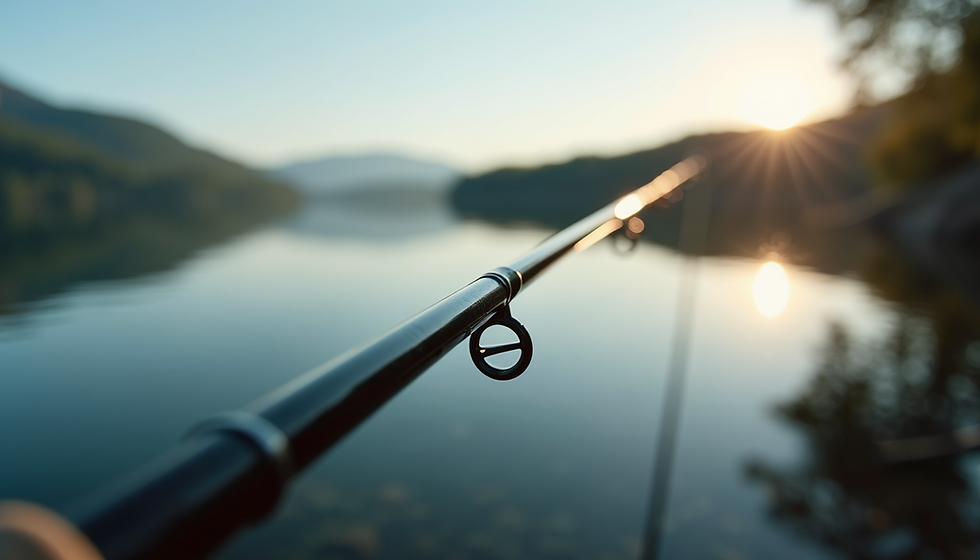Crafty Angler: DIY Fishing Hooks Using Stuff You Already Have at Home
- Flying Fishman

- Apr 24
- 3 min read
Fishing can be a fun and rewarding pastime, especially when you catch your own dinner. But what happens when you don’t have any hooks? Don’t worry! With a bit of creativity and items from your home, you can easily make effective fishing hooks. This guide will show you how to craft your own fishing hooks to enhance both your fishing experience and your resourcefulness.
The Basics: Why Make Your Own Hooks?
Making your own fishing hooks is not just about saving money. It’s an accessible way to engage with the art of fishing. According to a survey from the American Sportfishing Association, around 60% of anglers feel a sense of satisfaction from crafting their fishing gear. Not only does it reduce waste, but customizing your fishing setup can also lead to more personal and enjoyable experiences on the water.
Materials You'll Need
Before diving in, here are some common household items to gather:
Paper Clips or Safety Pins: Easy to reshape into effective hooks.
Bobby Pins: Sturdy and flexible, make great DIY hooks.
Old Jewelry: Broken necklaces and earrings can be repurposed for hooks.
Screws or Nails: Small screws or nails can serve as innovative hook alternatives.
Line or String: Fishing line is best, but any strong string will work.
Step 1: Shaping Your Hook
Using Paper Clips
Begin by straightening out a paper clip, leaving a small loop at one end for the eye of your hook. Bend the other end into a sharp curve to form the hook shape.
Tools Needed: Use pliers for better shaping.
Tip: The curve should be sharp enough to catch bait but not so sharp that it easily breaks.
Using Safety Pins
Open the safety pin’s clasp and gently bend the pointed end into a hook shape.
Modification: Cut down the safety pin to reach your preferred hook size.
Using Bobby Pins
Bobby pins can be reformed similarly. Bend the rounded end into a hook, ensuring the straight part remains available for connection to the line.
Customization: Cut the bobby pin for the desired length based on your target fish.
Reusing Old Jewelry
Search through broken jewelry for usable components that resemble hooks. Detach the hook mechanism and attach it to your fishing string.
Creativity: This method can allow for colorful designs while fishing.
Step 2: Adding Strength to Your Hook
Making sure your hook is strong enough to handle the fish you catch is crucial:
Reinforcement: Consider wrapping tape around the shank if your material feels weak.
Double Up: Use two hooks connected together for added durability, if applicable.
Step 3: Attaching Your Hook
With your hook ready, you next need to attach it:
Knotting Technique: Use a fisherman's knot or double knot to secure the hook to your line.
Length Matters: Make sure your line is long enough for comfortable casting.
Baiting Your Hook: Use available bait, like worms, bread, or even leftover kitchen scraps.
Tips for Fishing with Homemade Hooks
Test Your Creation
Before heading out, ensure your homemade hook is effective:
Setup: Attempt to catch something small first to assess performance.
Adjustments: Fine-tune your design based on test catches to improve success.
Be Patient
Remember, fishing often requires patience. If you don’t catch fish initially, don’t lose hope; it could just be a matter of luck.
Playing with Creativity: Personalizing Your Hooks
Don’t hesitate to further personalize your hooks:
Paint: Use waterproof paint to make your hooks visible and potentially more attractive to fish.
Decoration: Attach feathers or other household items to create unique lures.
Best Practices for Safety
When crafting your hooks, always prioritize safety:
Avoid Sharp Edges: Check for any sharp edges that could cause injury during construction.
Proper Storage: Store your homemade hooks in a container to ensure safety while searching through your gear.
Why Use Homemade Hooks?
Creating and utilizing DIY hooks has many benefits:
Cost-Effective: You save money on fishing supplies.
Sustainability: Reusing items helps reduce waste.
Skill Development: You enhance your crafting skills and become more resourceful.
Fun Factor: There is joy in creating effective tools from simple materials!
Wrapping Up
Crafting your own fishing hooks from everyday items is simpler than it seems. With a few basic materials and some imagination, you can create functional hooks for your next fishing trip. Not only do you save money, but you also add a personal touch to your gear. Embrace the creative process, and enjoy the thrill of fishing with your handmade hooks.

By exploring this crafty approach, you can elevate your fishing experience. Nothing quite compares to the thrill of catching fish on a hook you made yourself. With these tips and techniques, you're ready to enjoy the great outdoors while adding your unique DIY touch!
Happy fishing, Crafty Angler!




